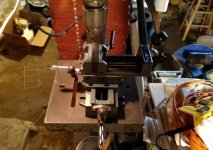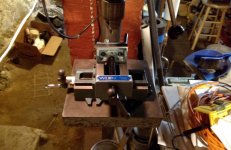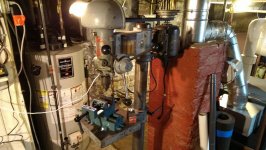cj133
Aluminum
- Joined
- May 8, 2014
- Location
- New Jersey USA
Hi all,
As you may recall I'm very new to this and have finally bought a vise for the Canedy-Otto. Before I start drilling holes in the table I'd like some opinions on the best position to mount it in for general work.
If this was yours what position would you mount it in and how would you mount it?
I'm guessing with the vise handle towards me may be best and mounted by drilling and tapping a few holes in the table so it can be easily removed without messing with nuts and washers every time?
As you may recall I'm very new to this and have finally bought a vise for the Canedy-Otto. Before I start drilling holes in the table I'd like some opinions on the best position to mount it in for general work.
If this was yours what position would you mount it in and how would you mount it?
I'm guessing with the vise handle towards me may be best and mounted by drilling and tapping a few holes in the table so it can be easily removed without messing with nuts and washers every time?










